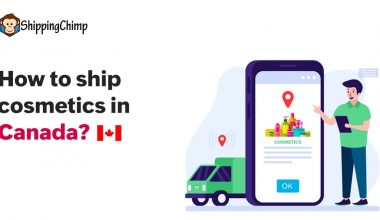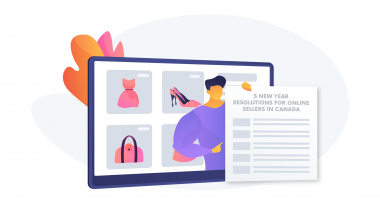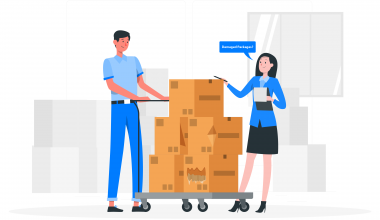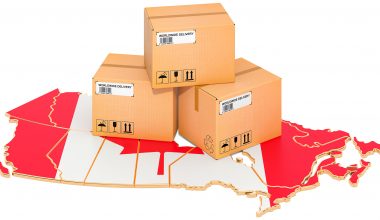Ecommerce return rates are high in Canada. The average return percentage of eCommerce is typically 20% to 30%. For a small eCommerce business owner, this statistic is highly discouraging. In this highly competitive market, if a business looking to lower return rates in 2024, they have to actively discourage returns to stay profitable.
Retailers are focusing on innovative approaches to reduce eCommerce return rates, employing strategies like detailed product descriptions and accurate sizing guides. By optimizing their return policy and enhancing the online shopping returns process, businesses are effectively reducing the logistical and financial burden associated with returns. For Canadian online retailers, effectively discouraging returns is becoming a key factor for maintaining customer satisfaction.
In this blog post we dive deeper into the most common causes for eCommerce returns, the ways a brand can discourage returns and how popular eCommerce brands are doing this already. Here’s how to lower return rates in eCommerce in 2024.
A formula to quickly calculate the return rate for your business
Return Rate = (Units returned/ Total sales) X 100
The most common causes behind the high Canadian eCommerce return rate –
- Size-Fit issue
- Inaccurate product description
- Broken or damaged product
- Poor quality product
- Delivery problems
Now if I am not an apparel brand, “fit” is not my problem to worry about. This is where returns by industry become an important factor.
Canada eCommerce return rate by industry (as of September 2023)
Image credit – Statista
On returns, David Sobie, co-founder and CEO of Happy Returns said –
“Shoppers return 5 to 10 per cent of what they purchase in store but 15 to 40 per cent of what they buy online.”
Toronto-based retail analyst Bruce Winder also weighed in –
“Online returns are about three times that of bricks-and-mortar returns.”
The first solution that comes to mind is to charge for returns, followed by having a shorter return period and giving subsequent discounts.
Charge extra for returns – Charging extra seems to be the most common go-to for retailers with a rising return rate. However, 57% of online shoppers won’t shop from a retailer that does not offer Free Returns by mail/courier. 40% of shoppers are willing to pay for returns if the cost is shared. Quite a conundrum here. So, here is what Thomas Borders, Vice President and General Manager of the product lifecycle cloud at Inmar Intelligence had to say which shifts the needle back in favour of discouraging free returns –
“[Removing free shipping] is one of their major attempts at curtailing the overbuying online where people feel like there are no consequences because they can ultimately return it if they don’t like it,”
Shorter Return Period -. Being strict about returns is one way to go and a shorter return period is one of the eCommerce Return Policy Best Practices.
A shorter return period works in two ways. Firstly, as explained by Natalie Kotlyar, BDO USA national managing partner –
“Retailers don’t want to take aged inventory and take back, for example, a coat in March. That’s one of the reasons why retailers are trying to disincentivize consumers from doing returns.”
Secondly, it helps buyers be intentional about their purchase and be mindful of the return date.
Subsequent discounts – Some brands may offer small discounts or future purchase credits if customers choose to keep items they are considering returning. Customer satisfaction and returns have to be balanced. Reverse logistics is expensive and customer acquisition is even more.
As Aaron Schwartz, president of Loop Returns puts it –
“As a brand, you may have paid $25-$30 to acquire a customer, and now you might lose them.”
Other ways that eCommerce brands follow to achieve lower return rates –
1. Accurate and Detailed Product Descriptions
Detailed descriptions, high-quality images in natural lighting, and videos help reduce returns due to unmet expectations. Here is how Hudson’s Bay prioritizes this.
Hudson’s Bay
High-quality images and accurate colour representations.
2. Size Guides and Virtual Fittings
For clothing and footwear, size guides are crucial. You may also include advanced tools like virtual fitting rooms or augmented reality (AR) apps to help customers choose the right size.
Lululemon
Detailed size guides to help customers choose the right fit, and reduce returns due to size issues.
Roots Canada
Clear sizing information to reduce returns due to fit.
Wayfair Canada:
Wayfair has a “View in Room” feature, allowing customers to see how furniture and decor will look in their space, reducing returns due to style or size mismatches. Furniture retailers, take notes!
AR is also increasingly used by retail luxury brands. Perry Kramer, Vice President and practice lead at Boston Retail Partners notes –
“For as long as most of us can remember, the sale and return process in luxury retail has been based on personal relationships and a little black book of clients.”
Bringing AI fitting rooms to luxury brands is a good way to keep returns in check.
3. Customer Reviews and Q&As
Allowing customers to leave reviews and answer product questions can provide valuable insights for potential buyers. More specifically, mention size in reviews. A McKinsey return management survey said that having reviews with size and without makes a world of difference (from 5.4 to 5.2 in terms of effectiveness). Data suggests that around 50 reviews result in fewer returns.
Amazon Canada
Amazon’s extensive review and question-and-answer sections help customers make informed decisions. Now, with the new Generative AI tool, this is a much more focused endeavour.
4. Live Chat and Customer Support
Providing immediate assistance through live chat or responsive customer service can help resolve doubts or questions that might otherwise lead to returns. Brands like Canadian Tire and Hudson’s Bay are leading examples.
Canadian Tire
Immediate assistance for any queries about products helps in making sure that customers are buying what they need and that eventually leads to lower return rates.
5. Realistic Product Representations
Ensuring that the product visuals and descriptions accurately represent the actual product helps in reducing returns. This includes using true-to-life colours, showcasing products in various settings, and being transparent about product materials and features.
Best Buy Canada
Best Buy provides comprehensive product descriptions and encourages user reviews, giving customers a clear idea of what to expect.
6. Educational Content
Creating content that educates customers on using or caring for the product can reduce returns due to misuse or misunderstanding. This is particularly effective for electronics, appliances, and speciality items.
Canadian Tire
Canadian Tire provides educational content in the form of how-to guides, DIY tips, and product usage videos. This is particularly useful for their range of products, from automotive to home and garden.
7. Feedback Before Return
eCommerce post-purchase experience is something retailers focus on a lot but pre-return experience is just as important. Encouraging customers to reach out for support or provide feedback before initiating a return can help businesses potentially offer solutions that prevent a return. It is noteworthy here that while returns are a common practice in Canada, Canadian businesses are also not legally bound to return products once bought.
Mountain Equipment Company
When a customer initiates a return MEC often seeks to understand the reason behind it. This could be done through a feedback form that is part of the return process, or through direct communication with customer service.
8. Order Verification
Some brands employ order verification steps where customers review their cart and choices before finalizing the purchase. This minimizes accidental orders or incorrect selections.
Shopify-Powered Stores
Shopify offers features for merchants to include order confirmation steps, minimizing accidental purchases.
9. Subscription Models and Memberships
Offering subscription models or memberships with benefits can also reduce the frequency of Canadian online shopping returns.
Amazon Prime
Prime members might think twice about returning due to the associated benefits they receive. In fact, most of the eCommerce return policy best practices come from Amazon.
10. Ensure items arrive in good condition
Choose a trustworthy partner. Legacy shipping carriers, sadly, are no longer compatible with eCommerce. Hence, they do not know how to properly take care of eCommerce orders. But making sure the orders arrive in good condition is a no-brainer for reducing returns.
About ShippingChimp
ShippingChimp has tailor-made solutions for eCommerce businesses. Since most damage occurs in the picking and packaging stage, we ensure that extra care is taken. With rates starting at $5, we make it easy for SMBs to save on shipping. Compare your shipping costs to ours here.
- How Does Etsy Shipping Work? - May 30, 2025
- How to Measure a Box for Shipping - May 13, 2025
- Why Etsy Shipping is so expensive? - May 8, 2025






